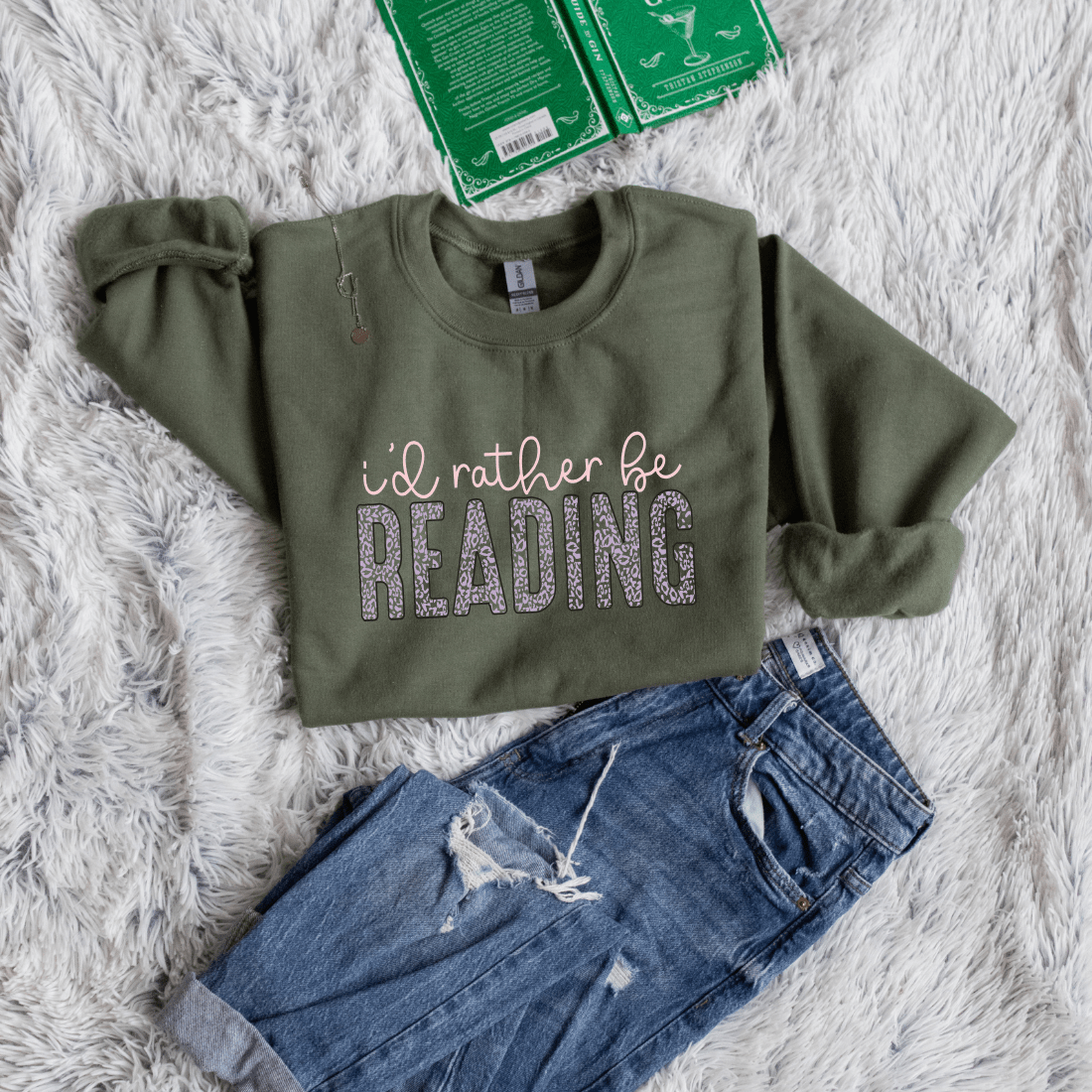
Book-to-Movie Adaptations: Why You Should Read the Book Before Watching the Film
Are you that person who always says, “The book was better” right after a movie adaptation ends? Or maybe you’ve heard your bookworm friends passionately explaining why the book is always superior to the film version? Well, there's definitely a reason for that! Today, we’re diving into the fascinating world of book-to-movie adaptations and why, more often than not, you should read the book before watching the film. So grab your favorite mug of coffee or tea, get comfy, and let’s get into why reading the book first is a truly magical experience. ☕✨
1. The Depth of the Story: A World Beyond the Screen
Books are like icebergs—what you see in a movie is just the tip, while the novel holds the full depth and complexity beneath the surface. When a book is adapted into a film, there are always cuts made, simply due to time constraints. Most movies are 90 to 120 minutes long, and even the longer ones can’t capture every intricate subplot or character nuance that a book offers.
More Time for Details
Books allow authors to include an enormous amount of detail. This could be world-building in a fantasy novel, a character's internal monologue, or even just small moments of interaction that add emotional weight. For instance, in Harry Potter and the Order of the Phoenix, there are hundreds of pages that give us insight into Harry's psychological struggles—his sense of isolation, his confusion about Dumbledore's behavior, and his fear of what the future holds. The movie? Well, it hits the major plot points but doesn’t always capture the nuance.
“The world inside a book can be vast and intimate all at once. It’s a place where you can spend days, weeks, or even years with characters, and really get to know them.”
Rich Backstories and Subplots
Often, books include backstories that add incredible depth to a character or situation, but these are left out of the movie adaptation. Take The Lord of the Rings, for example. The movies are epic, but they don’t dive into the same level of detail about Middle-earth's history, the intricacies of elvish culture, or the complex relationships among the characters as Tolkien's novels do. The book is a deep dive, whereas the movie is more of a fast-paced overview.
2. The Characters Feel More Real
When you read a book, the characters come alive in your mind. You get to understand their thoughts, motivations, fears, and dreams on a deeply personal level. You’re privy to their inner dialogue, which is nearly impossible to fully convey in a film adaptation.
Inner Monologues
Movies are great at showing us what's happening, but they struggle to tell us what’s going on inside a character's head. In books like The Great Gatsby, Nick Carraway’s internal musings shape the entire story, offering commentary on the events and his moral struggles. In a film, this kind of introspection is often lost or relegated to voiceover, which doesn’t always carry the same emotional weight.
Complex Character Arcs
A book has the luxury of time. It can unfold character arcs slowly, allowing you to see growth, setbacks, and transformation. When books are adapted into movies, the intricacies of these arcs are often condensed or entirely cut out. In The Hunger Games, Katniss Everdeen's internal battle with her own fears, guilt, and confusion about her feelings for Peeta and Gale is something that we fully understand because we are inside her head. The movie, while fantastic, has to rely on Jennifer Lawrence’s expressions and some well-placed dialogue to try to convey that same inner turmoil—and it's just not the same.
3. The Power of Imagination
When you read a book, you’re the director. You get to imagine the setting, the characters, the colors, and even the music in the background. Every reader will have their own unique interpretation of the world the author has created. When you watch the movie, you’re watching someone else's vision—sometimes it's fantastic, other times it just doesn't live up to what you imagined.
Your Vision vs. Theirs
Take Harry Potter again as an example. The Hogwarts in your mind might be grander, darker, or more colorful than the one presented in the films. Perhaps you imagined Hermione a little differently, or the Quidditch matches a bit more intense. Reading the book allows your mind to wander and create, giving you a personal connection to the story that a movie simply can’t replicate.
4. The Adaptation Changes
Books and movies are different mediums, which means changes are almost always necessary during adaptation. Sometimes characters are combined, plot points are altered, or new scenes are added that weren’t even in the book. By reading the book first, you get to experience the original story as the author intended it, without any Hollywood alterations.
Cut Content
In The Golden Compass, the book ends in a dramatically different place compared to the film adaptation. Crucial plot points were omitted, and the overall tone of the ending changed entirely. Reading the book gives you access to the author’s complete story, unaltered by the limitations of a screenplay.
Added Hollywood Moments
Sometimes movie studios decide to add elements that weren’t in the book to add more drama or romance. One notable example is The Hobbit movies, where a romantic subplot was created between Tauriel and Kili—something that was never in Tolkien’s original work. Reading the book gives you the true, unembellished story.
5. Books Allow for Deeper Emotional Investment
Spending hours, days, or even weeks with a book allows for a level of emotional investment that a two-hour movie simply can’t match. You’re with these characters through their struggles, triumphs, and darkest moments. When you finally close that book, it’s like saying goodbye to an old friend.
Emotional Impact
The build-up of emotions over a 500-page book simply can’t be replicated in a two-hour movie. Consider The Fault in Our Stars by John Green. The book takes you on an emotional journey, allowing you to get fully attached to Hazel and Augustus, making the ending hit you all the harder. The movie, while touching, just doesn’t provide the same emotional depth because it has to condense their story.
6. The Book-to-Movie Experience
Another reason to read the book first? The simple joy of experiencing both versions. By reading the book, you get the full, immersive experience the author intended. Then, when you watch the movie, you can see how the filmmakers interpreted that world. It’s a fascinating process, and it’s fun to compare the two mediums—spotting the differences, enjoying the casting choices, and appreciating the visual interpretation.
Spotting Differences and Easter Eggs
When you read the book first, you’re in on all the inside jokes and hidden details that might appear in the movie. For example, in the Harry Potter films, there are numerous small Easter eggs that only make sense if you’ve read the books—like the deeper significance of certain characters' actions, or background props that reference obscure details.
7. Respect for the Author’s Vision
An author pours years of work into a book, crafting every detail, every line of dialogue, every twist and turn. Watching the movie before reading the book is like reading the abridged version of a masterpiece. To fully appreciate the creator's vision, it’s always best to go back to where it all started—the pages of the book.
The Original Message
Movies sometimes change the message of the book—sometimes intentionally, sometimes not. By reading the book, you’re more likely to understand the themes the author was trying to convey. In To Kill a Mockingbird, the book deals deeply with complex themes of racism, morality, and childhood innocence through Scout’s eyes. The movie adaptation, while powerful, doesn’t capture the same breadth of themes due to time constraints.
How to Enjoy Both the Book and the Movie
If you’re eager to dive into both the book and its movie adaptation, here are some tips to make the experience more enjoyable:
-
Read the Book First: Always start with the original story to get the complete, uncut experience.
-
Give Yourself Time: Don’t rush from the book to the movie. Let the book’s impact settle before seeing someone else’s version.
-
Keep an Open Mind: Adaptations are interpretations. They won’t match what’s in your head—and that’s okay. Enjoy them as a separate experience.
-
Discuss with Friends: If you’re in a book club or have friends who love reading, discuss the differences. It can be fascinating to compare opinions on what worked, what didn’t, and what you loved about both versions.
Why Reading the Book First Matters
So there you have it—reading the book before watching the movie offers a richer, more immersive experience. It lets you experience the characters, settings, and emotions the way the author intended. Plus, you get to enjoy all the juicy details that are inevitably lost on the cutting room floor.
Whether it’s a fantasy epic like Harry Potter, a tear-jerker like The Fault in Our Stars, or a classic like To Kill a Mockingbird, the book is always worth the read before hitting



